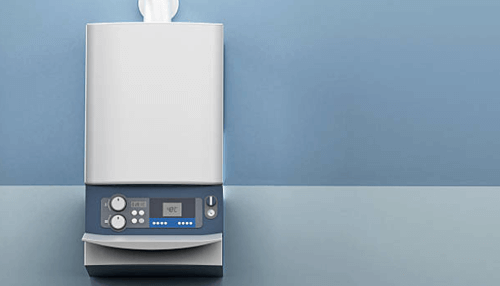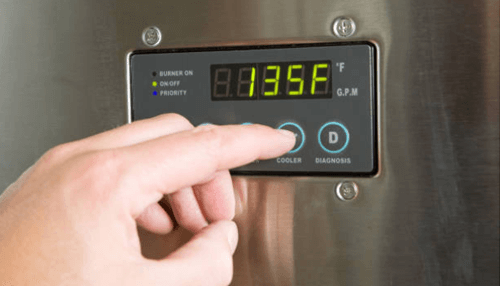Keeping your water heater at the right temperature reduces water bills and prevents harmful bacteria from growing in your water heater. Find out what the right temperature is for your water heater and why you should keep it that way.
Nice, warm water during the colder months is a necessity for many people. That’s why if there isn’t enough hot water or the water isn’t hot enough, it can affect your daily schedule. Some hot waters also heat the water to an extent where it can scald you. Scald burns are painful, especially for children and older people.
Setting the water tank to the right temperature can prevent most issues related to hot water. But you should also ensure that the water heater’s temperature is maintained at the ideal setting.
Water Heaters and Bacteria
The water heater should never be set below 120°F. The Legionella bacteria, known for causing Legionnaires’ disease, grows well in moist conditions under 120°F. If your water heater’s temperature is set too low, you run the risk of this bacteria growing in your water heater.
Legionnaires’ disease is a respiratory disease that can lead to a severe form of pneumonia. It can enter homes and buildings through the water flowing out of the showerheads and faucets.
Always maintain a minimum of 120°C. This is a temperature where bacteria can’t survive, and it also provides hot water that isn’t scalding.
Setting the Water Heater to 140°F
Setting the water heater higher than 120°F to 140°F is even better for killing off bacteria. At 120°F, the bacteria can’t thrive but if it’s already in the water, it can still enter homes. To kill the bacteria in the water heater, you need to set the water heater temperature to 140°F.
However, there is a problem associated with setting the water heater temperature to this number. At 140°F or 150°F, the water becomes so hot that it can easily scald you. This is especially dangerous in homes that have children or older people.
It takes only a few seconds for scald burns to develop. As older people and children have thinner and more sensitive skin, they are at greater risk for scald burns.
You can avoid this problem in two ways:
- Purchase an anti-scald device. These should be placed on top of the showerheads and faucets. They prevent water above a certain temperature from flowing out.
- Mix Hot Water with Cold Water: If you don’t want to invest in an anti-scald device, you can simply mix hot water with cold water. You can either do this by installing faucets that allow you to mix water or manually mix hot and cold water together in a container.
How to Tell What the Temperature of a Water Heater Is
If you’re unsure about the water heater temperature, then you’ll need to find out what it is first. In manual water heaters, you can see the number on the heater. Many water heaters only show ‘Low’, ‘High’, and ‘Very High’ as the temperature settings.
In this case, you’ll have to check the temperature of the faucet. You can do this by:
- If your water heater has a tank, then you shouldn’t use any hot water for at least two hours before the test.
- During the test, carry a thermometer with you. Turn on the faucet and let the hot water run for three to four minutes.
- Now take the temperature of the water with the thermometer.
If it’s too high or too low, it’ll need to be adjusted.
Why You Should Maintain the Water Heater’s Temperature
The water heater’s temperature will take time to adjust, especially for heaters that have water tanks. These water heaters should be left alone for at least 24 hours before the temperature sets. In these cases, adjusting and readjusting the water heater’s temperature can affect its longevity.
If the water heater doesn’t have a tank, then it’s possible to adjust the temperature more frequently. However, this should be avoided. The water heater’s temperature should always be set to 120°F. If it’s too hot or too low, the water heater’s performance will be affected. Really high temperatures can also lead to accidents like the water heater bursting.
Being a handyman means helping people solve problems with their water heaters, but it can also be a dangerous occupation. Public liability insurance for plumbers will keep your mind free from stress should you face any danger at work. Get coverage for yourself and your equipment and know that you’re protected in the same way you protect your clients.



